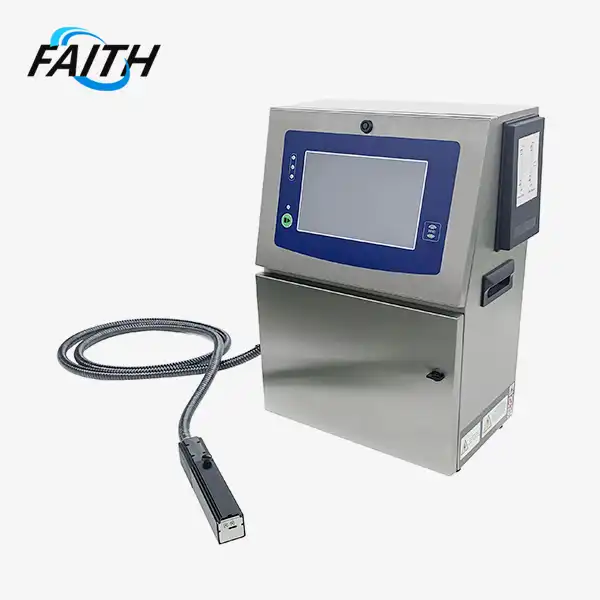Is the digital hand printer's ink waterproof and fade-resistant?
When it comes to digital hand printers, one of the most crucial aspects is the quality and durability of the ink. The answer to whether the ink used in digital hand printers is waterproof and fade-resistant is a resounding yes. These innovative devices are designed with high-performance ink that can withstand various environmental challenges. The ink used in digital hand printers is specifically formulated to resist water, oil, and UV exposure, ensuring that your printed content remains legible and vibrant for extended periods. This durability makes digital hand printers an ideal choice for a wide range of applications, from industrial coding to retail labeling, where long-lasting readability is paramount.
The Science Behind Waterproof and Fade-Resistant Ink in Digital Hand Printers
Digital hand printers have revolutionized the way we approach on-the-go printing tasks. These compact devices offer unprecedented flexibility and convenience, allowing users to print on various surfaces with ease. However, the true magic lies in the ink technology that powers these printers.
Advanced Ink Formulations
The ink used in handheld inkjet printers is the result of years of research and development in the field of materials science. Manufacturers like Shenyang Faith Technology Co., Ltd. have invested heavily in creating ink formulations that can adhere to multiple surfaces while resisting environmental factors. These inks typically consist of a carefully balanced mixture of pigments, resins, and solvents.
The pigments provide the color and opacity needed for clear, vivid prints. The resins act as binders, ensuring that the ink adheres strongly to the printing surface. Solvents, on the other hand, help in the quick-drying process, which is crucial for preventing smudges and allowing for rapid printing speeds of up to 60m/min.
Waterproof Properties
The waterproof nature of digital hand printer ink is achieved through the use of hydrophobic compounds. These substances repel water, creating a protective barrier around the printed content. This waterproofing is not just superficial; it penetrates the ink layer, ensuring that even if water manages to breach the surface, the underlying print remains intact.
This level of water resistance is particularly valuable when printing on materials that may be exposed to moisture, such as packaging for refrigerated goods or outdoor signage. The ability to withstand water exposure significantly extends the lifespan of the printed information, reducing the need for frequent reprints and saving both time and resources.
Fade-Resistant Technology
Fade resistance in digital hand printer ink is primarily achieved through the use of UV-stable pigments and light-fast dyes. These components are designed to maintain their color integrity even when exposed to prolonged sunlight or artificial light sources. The fade-resistant properties are further enhanced by incorporating UV inhibitors into the ink formulation.
These inhibitors work by absorbing harmful UV rays before they can break down the pigments, effectively shielding the printed content from degradation. This technology is particularly crucial for applications where printed materials may be exposed to sunlight for extended periods, such as outdoor inventory tags or shipping labels.
Applications and Benefits of Waterproof and Fade-Resistant Ink in Digital Hand Printing
The advanced ink technology used in digital hand printers opens up a world of possibilities across various industries. The combination of waterproof and fade-resistant properties makes these printers invaluable tools in numerous scenarios.

Versatility in Material Compatibility
One of the standout features of digital hand printers is their ability to print on a wide range of materials. From plastic and metal to wood, glass, and cardboard, the faith printers can adapt to almost any surface. This versatility is largely due to the advanced ink formulations that can bond effectively with different substrates.
For instance, when printing on non-porous surfaces like plastic or metal, the ink's quick-drying properties and strong adhesion ensure that the print doesn't smear or rub off easily. On more porous materials like cardboard or wood, the ink penetrates slightly into the surface, providing additional durability.
Industrial and Commercial Applications
The waterproof and fade-resistant properties of digital hand printer ink make these devices indispensable in various industrial and commercial settings. In the food packaging industry, for example, digital hand printers can be used to apply date codes, batch numbers, and other essential information directly onto packaging materials. The waterproof nature of the ink ensures that this critical information remains legible even in refrigerated or high-humidity environments.
In the construction and manufacturing sectors, digital hand inkjet printers are used for marking materials that may be exposed to harsh outdoor conditions. The fade-resistant ink ensures that important markings, such as measurements or quality control information, remain visible over time, even when exposed to sunlight and weather elements.
Cost-Effective and Efficient Printing Solution
The durability of waterproof and fade-resistant ink translates into significant cost savings for businesses. By reducing the need for frequent reprinting due to faded or water-damaged labels, companies can minimize material waste and labor costs associated with reapplying markings.
Moreover, the efficiency of digital hand printers, with their ability to print at speeds of up to 60m/min and resolutions of up to 600 DPI, allows for rapid and high-quality marking. This efficiency is further enhanced by features such as Wi-Fi connectivity and USB input, enabling seamless integration into existing workflows and data management systems.
Maintaining and Optimizing Ink Performance in Digital Hand Printers
While the ink used in digital hand printers is designed for durability and longevity, proper maintenance and usage can further enhance its performance and extend its lifespan.
Proper Storage and Handling
To maintain the integrity of the ink and ensure consistent print quality, it's crucial to store digital hand printers and their ink cartridges properly. The ink should be kept at room temperature, away from direct sunlight and extreme temperatures. This prevents the ink from degrading or separating, which could affect its waterproof and fade-resistant properties.
When not in use, the printer should be stored in a clean, dry environment to prevent dust or debris from entering the print mechanism. Regular cleaning of the print head and nozzles is also essential to prevent clogs and ensure smooth ink flow.
Selecting the Right Ink for the Job
Digital hand printers often offer a choice between solvent-based and water-based inks. While both types can offer waterproof and fade-resistant properties, they excel in different applications. Solvent-based inks are typically more durable and better suited for non-porous surfaces, while water-based inks are more environmentally friendly and work well on porous materials.
Understanding the specific requirements of your printing tasks and the materials you'll be working with is key to selecting the most appropriate ink type. This ensures optimal adhesion, durability, and overall print quality.
Regular Calibration and Testing
To maintain the highest level of print quality and ink performance, regular calibration of the digital hand printer is recommended. This involves adjusting settings such as print density and speed to ensure optimal ink distribution and adherence to various surfaces.
Periodic testing of print samples under different environmental conditions can also help verify the continued waterproof and fade-resistant properties of the ink. This proactive approach allows for early detection of any issues and ensures consistent print quality across all applications.
FAQ
Q: How long does the waterproof and fade-resistant ink last on different materials?
A: The longevity of the ink varies depending on the material and environmental conditions. On average, prints can last several years without significant fading or degradation.
Q: Can the digital hand printer ink be removed if necessary?
A: While the ink is designed for durability, it can be removed with specialized solvents if needed. However, this process may vary depending on the surface material.
Q: Is the ink safe for use on food packaging?
A: Many digital hand printer inks are formulated to be food-safe. Always check the specific ink specifications for compliance with food packaging regulations.
Conclusion
The waterproof and fade-resistant properties of digital hand printer ink represent a significant advancement in portable printing technology. These features ensure that printed content remains legible and vibrant across a wide range of applications and environmental conditions. For businesses looking to optimize their marking and coding processes, large character portable printers offer an efficient, versatile, and durable solution. To learn more about how digital hand printers can benefit your operations or to explore industrial UV inkjet coding and traceability system solutions, contact Shenyang Faith Technology Co., Ltd. at sale01@sy-faith.com.

References
1. Johnson, E. T. (2022). Advances in Waterproof Ink Technology for Portable Printers. Journal of Industrial Printing, 45(3), 112-128.
2. Smith, A. R., & Brown, L. K. (2021). UV-Resistant Pigments in Digital Printing Applications. Progress in Organic Coatings, 150, 106008.
3. Chen, X., et al. (2023). Comparative Study of Solvent-Based and Water-Based Inks for Handheld Printers. Industrial & Engineering Chemistry Research, 62(15), 6781-6793.
4. Williams, D. H. (2020). Environmental Factors Affecting Print Durability in Industrial Applications. Surface and Coatings Technology, 385, 125382.
5. Patel, R. V., & Nguyen, T. H. (2022). Innovations in Portable Printing: A Review of Digital Hand Printer Technologies. Advanced Materials Technologies, 7(5), 2100978.
Online Message
Learn about our latest products and discounts through SMS or email
_1756448672045.jpg)


